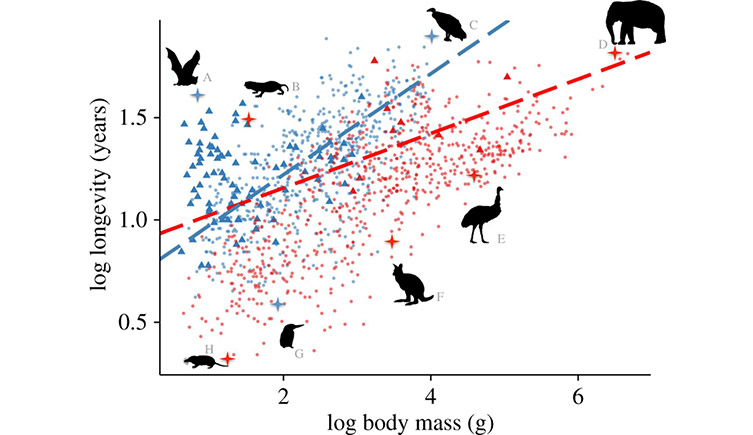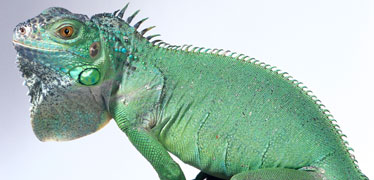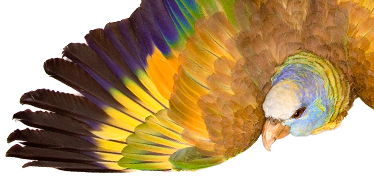Phylogenetic comparative methods

Phylogenetic comparative methods can be used to investigate the relationships between body size, life span and flight
Project summary
- Focus: Developing and improving methods to compare phylogenies
- Funding: European Commission Marie Skłodowska-Curie Grant
We are developing new methods to compare phylogenies, improving existing methods, and helping other researchers to use them.
Phylogenetic comparative methods use phylogenies to ask interesting evolutionary questions.
They can be used to:
- study speciation and extinction
- determine how quickly or slowly evolutionary changes have occurred
- investigate whether evolutionary changes occur gradually or in large jumps
Many projects in the Museum's Vertebrates Division use phylogenetic comparative methods with data from the collections.
Museum staff
Collaborators
- Dr Gavin Thomas
University of Sheffield - Prof Rob Freckleton
University of Sheffield
Publications
Cooper N, Thomas GH, FitzJohn RG (2016) Shedding light on the 'dark side' of phylogenetic comparative methods. Methods in Ecology and Evolution, In press.
Guillerme T, Cooper N (2016) Effects of missing data on topological inference using a Total Evidence approach. Molecular Phylogenetics and Evolution, 94: 146–158.
Cooper N, Thomas GH, Venditti C, Meade A, Freckleton RP (2015) A cautionary note on the use of Ornstein Uhlenbeck models in macroevolutionary studies. Biological Journal of the Linnaean Society.
Funded by


Origins, evolution and futures
We study the Earth's origins, environment and the evolution of life.

Vertebrates
Determining the diversity, biogeography, taxonomy and phylogeny of vertebrates.

Zoology collections
Our zoology collection has 29 million animal specimens and is rich in voucher, type and historical specimens.